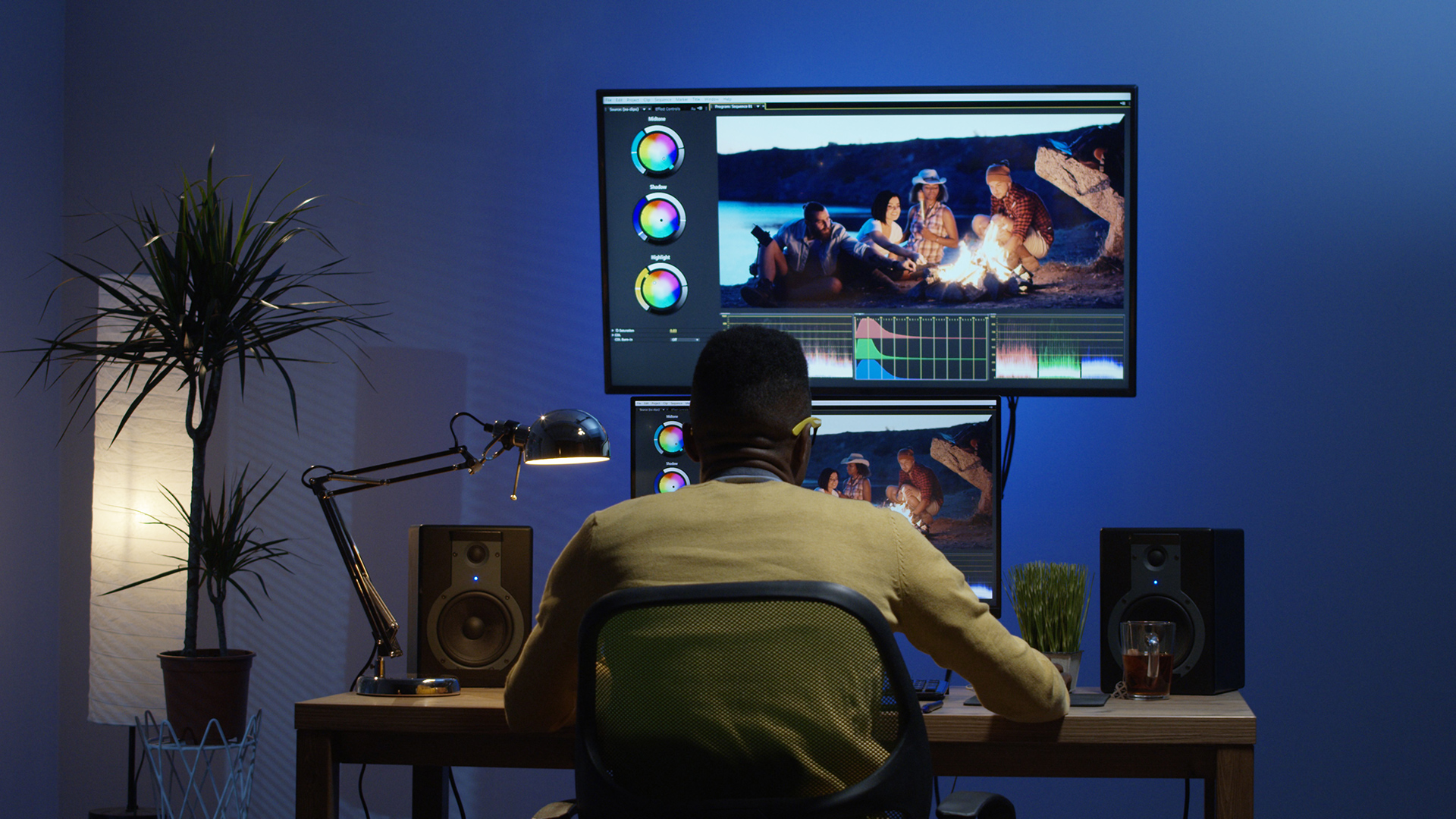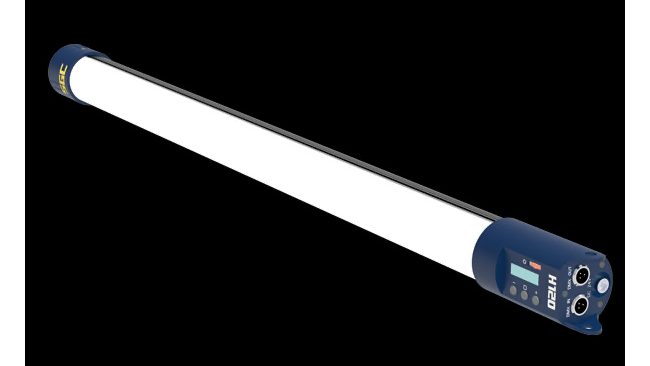
Replay: Setting up a grading room is a bit more involved than installing a desk and a few monitors. To do it effectively requires a bit more thought. Here's some valuable advice from experienced colourist Blake Jones on what you should be doing.
When setting up your grading suite, it’s important to take your room lighting into consideration. Lighting should be so that it does not contaminate your colour perception in any way. Room lighting and even the colour of the grading suite walls can, over a period of time, affect your perception of colour. Your brain will subconsciously apply the colour offset and your final colour correction will display this.
With this in mind, an ideal grading suite should not be painted with bright colours that could impact upon your colour perception. In general, 18% grey walls are the best choice. It’s also questionable if a grading suite can have windows. My feeling is that it’s OK to have windows in a grading suite as long as you have curtains that are heavy enough to block out the light when you are in a grading session.
We should then proceed to explain how we actually measure the colour of lighting. Lighting is measured on what is known as the Kelvin scale. The warmer the light, the lower the temperature and the higher the temperature, the more bluish the light.
We can see below how different types of light fall into which category on the scale.
- 1700K Light from a match
- 1850K Candlelight
- 2400K An incandescent light
- 3200K A studio photoflood lamp
- 5000K Fluorescent lamp tube lighting
- 5500 – 6000K Electronic camera strobe
- 6500K Overcast daylight
Optimum light
The optimum light to have in the grading suite should fall in around the 6500K colour temperature range. I recommend having a soft light source behind your grading monitor at around this colour temperature. I also have a light source around the control surface, also balanced to approximately 6500K. The advantage of this is when grading commercials, customers bring product examples for you to colour match. Viewing the products under these lighting conditions ensure that the colours being viewed are as non-contaminated as possible. The presence of the illumination behind the grading monitor helps to soothe the eyes during the colour grading process and cut down on fatigue.
It used to be quite a challenge to find room lighting that would supply a daylight colour temperature output and many times we had to make compromises such as placing blue filters over the lights to increase the colour temperature of the light source. Now it is relatively easy as there are many manufacturers that supply tube lighting that allows the colour temperature to be regulated, even sometimes via a smartphone app.

Daylight balanced lighting is a lot easier to set up now than it used to be.
Room size and features
We need to then think about room size. When grading with a projector, a larger room is required so that you can have the best experience. When grading commercials with customers, generally, a smaller room can be used with furniture to accommodate your client’s comfort. You also need to think about your desk size. You need a desk that is large enough to accommodate all your equipment, monitors, control surface, along with extra workspace for yourself and your customer.
I am a big fan of having a large workspace for my customer so that he or she can carry on with business while you are working. During a film I was working on, the director would arrive each day with his little doctor bag filled with paper. It turned out that he was an avid gambler and spent the day on the phone with his bookie betting on horses while I worked. Of course, this worked out fine until one day when one of his horses didn’t win and he was particularly disagreeable.
I am also a big fan of going with a larger grading suite as opposed to the smaller rooms. The reason for this is, if starting off with smaller projects that don’t require a large room due to little or no clients and then moving onto the bigger projects, you’re already set. I have found that there is nothing worse than getting crammed into a small grading suite full of clients as it makes for a stressful experience for both you and your clients.
Room accoustics and furniture
Another aspect to consider is room acoustics. In general, this is not so much of an issue in a grading suite but it should be considered. I had one instance whereby my suite had concrete walls and the acoustics were not optimal. I cured the problem by mounting acoustical foam panels on the walls and this worked nicely.
Now let’s talk a little bit about furniture. Remember, you’re going to be sitting in that chair for a while so it should be very comfortable. Also, make sure your client’s seating is comfortable as well. Remember that if your client is uncomfortable he won’t be very pleasant to work with, so certainly go with comfortable chairs and a nice couch and coffee table.
Finally, let’s discuss your client comfort in more detail. Very often, we have a fridge in the room that the client can dive into for quenching their thirst during the session and perhaps some munchies on the table. I used to also have collections of what we called “scandal” newspapers on the coffee table with headlines like “Elvis spotted in a UFO”. This proved to be a big success as most customers would spend a lot of time laughing while reading these and it really lightened the atmosphere. We also had a television in the client area of larger grading suites whereby the clients could watch the news or click over to the AV input and see what I was working on. We, of course, calibrated this television to bring it as close to the grading monitor as possible.
Tags: Post & VFX


Comments